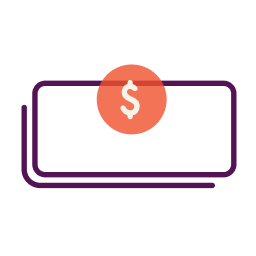On Sunday the Federal Reserve made an unprecedented cut to the federal funds rate for the second time this month by a full percentage point to a range of zero to .25%. In addition to the Fed’s rate cut, they are also renewing a bond buying strategy employed following the financial crisis of 2008, saying they will purchase $500 billion in Treasury bonds and $200 billion in mortgage-backed securities.
The rate cut and the purchase of Treasury bonds is in response to the economic slowdown the coronavirus is having on the U.S. economy. This is the largest emergency reduction in the funds rate since the Fed was established in 1913.
What Will the Rate Cut Do For the Economy?
A couple of the primary responsibilities of the Fed include, “Conducting the nation’s monetary policy by influencing money and credit conditions in the economy in pursuit of full employment and stable prices,” as well as, “Maintaining the stability of the financial systems and containing systemic risk that may arise in financial markets.”
One of the ways they do this is by adjusting the availability of capital in the economy by raising or lowering interest rates. Lowering the Federal funds rate (making borrowed capital cheaper) encourages more money into the economy, so businesses can invest, consumers can spend, and businesses can borrow. Lowering the the rate to between zero and .25% should lower interest rates for business owners looking for borrowed capital.
As a Business Owner, Where Will I See a Rate Change?
Although you might not see a lower rate reflected in interest rates immediately (it might take 60 to 90 days). In normal circumstances, you should eventually see it reflected in term loans, lines of credit, and particularly credit cards—a great way to hedge your cash flow needs during uncertain times like these.
Many personal and business credit cards with variable rates are based on the prime rate, which is very closely related to the federal funds rate. The same is true for loans and credit lines guaranteed by the Small Business Administration (SBA).
I’m a fan of augmenting cash flow needs with a business credit card for a number of reasons.
- A business owner with average, or even fair, credit can find approval with a business credit card. In other words, you don’t have to have perfect credit to qualify.
- Credit card providers like American Express, Discover, Capital One, and Bank of America all offer Business Credit Cards with zero interest to creditworthy borrowers.
- Like a credit line, you pay interest on the credit you use and can use it again once the balance is paid.
- You can use a business credit card to address short-term needs for capital without the need to reapply each time you access your available credit.
- They are a great tool for new businesses, or businesses trying to establish business credit, if they report to the business credit bureaus (which is important enough that you should ask).
Will a Business Credit Card Help Me Weather the COVID-19 Storm?
The short answer is likely, “Yes.”
A business credit card can be a great way to quickly access cash to cover a working capital shortfall caused by the coronavirus if your business has been impacted by people staying home.
Earlier this month the President announced his intention to make $50 billion in low-interest loans available to small businesses impacted by the coronavirus outbreak. Although Congress is working their way through that proposal and it’s not available yet, Congress passed legislation earlier this month that enables the SBA to offer disaster assistance within states and territories suffering from “…substantial economic injury…” as a result of the virus.
A business credit card (or two) can act as a bridge, giving you time to apply for the SBA’s disaster loan program. If you’re interested, you can contact the SBA directly by calling the SBA disaster assistance customer service center at 1-659-2955 (TTY: 1-800-877-8339) or email at disastercustomerservice@sba.gov.
Please keep in mind this information is changing rapidly and is based on our current understanding of the programs. It can and likely will change. Although we will be monitoring and updating this as new information becomes available, please do not rely solely on this for your financial decisions. We encourage you to consult with your lawyers, CPAs and Financial Advisors. To review your real-time funding options with one of Nav’s lending experts, please contact us.
This article was originally written on March 17, 2020 and updated on March 31, 2020.



Have at it! We'd love to hear from you and encourage a lively discussion among our users. Please help us keep our site clean and protect yourself. Refrain from posting overtly promotional content, and avoid disclosing personal information such as bank account or phone numbers.
Reviews Disclosure: The responses below are not provided or commissioned by the credit card, financing and service companies that appear on this site. Responses have not been reviewed, approved or otherwise endorsed by the credit card, financing and service companies and it is not their responsibility to ensure all posts and/or questions are answered.